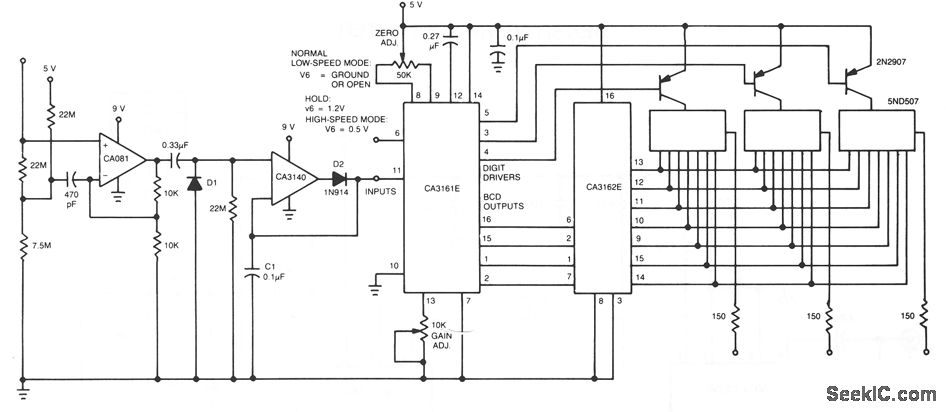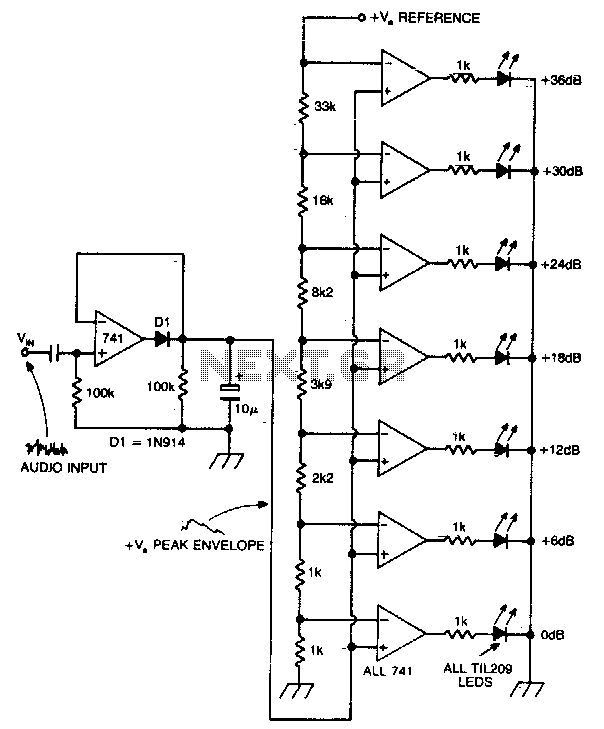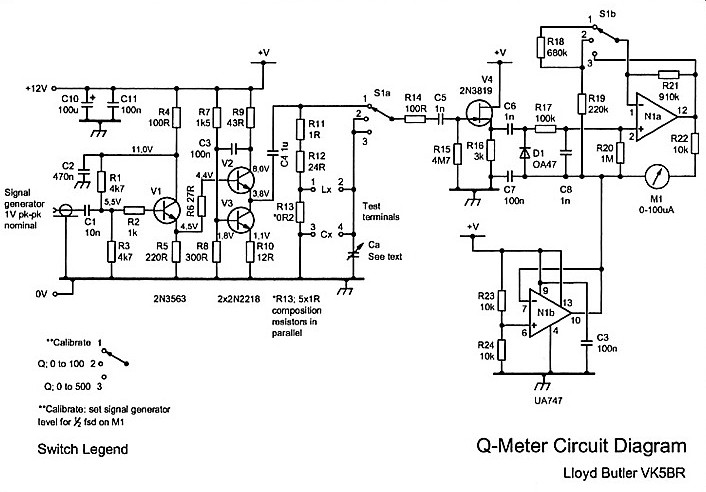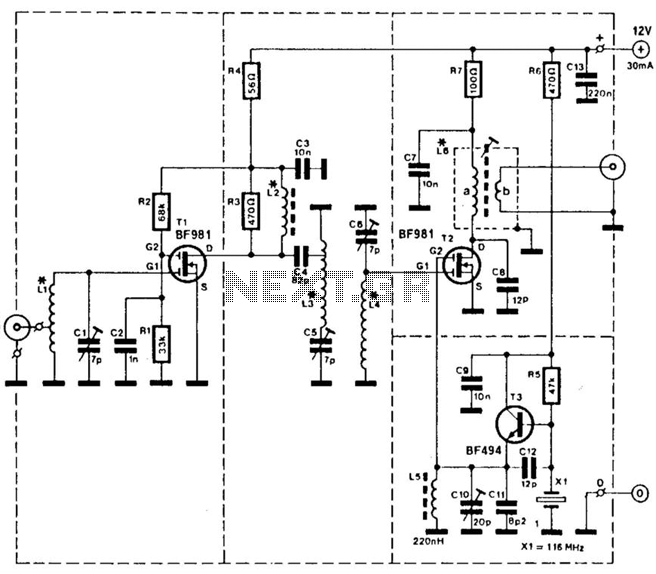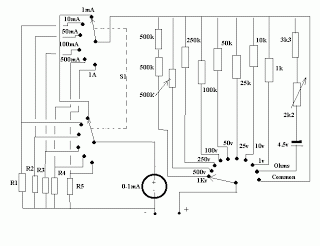
VU Meter with UAA180
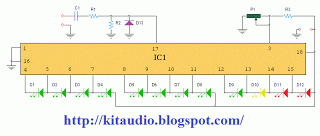
The circuit was designed based on the operation of the Siemens UAA180, which functions as an LED driver for light band displays that measure the level of audio signals.
The Siemens UAA180 is an integrated circuit specifically designed for driving LED displays, making it ideal for applications such as audio level indicators. This circuit utilizes the UAA180 to control multiple LEDs in a light band display, providing a visual representation of audio signal levels. The UAA180 operates by adjusting the current flowing through the LEDs, allowing for precise brightness control based on the input audio signal.
The circuit typically includes several key components: the UAA180 IC, resistors to limit current through the LEDs, and capacitors for stability and filtering. The audio signal is fed into the UAA180, which processes the signal and converts it into a corresponding output that drives the LEDs. The design may also incorporate additional features such as a potentiometer for adjusting sensitivity, ensuring that the display can be calibrated to different audio signal levels.
In practice, the circuit can be configured to illuminate a series of LEDs in a graduated manner, providing a clear visual representation of the audio signal's amplitude. This is particularly useful in audio equipment, where visual feedback is essential for monitoring levels and ensuring optimal performance. The UAA180's ability to handle varying input signals while maintaining consistent LED brightness makes it a valuable component in audio level display applications.
Overall, the design of this circuit emphasizes efficiency and accuracy in displaying audio signal levels through LED indicators, leveraging the capabilities of the UAA180 to create a reliable and effective tool for audio signal monitoring.The circuit was designed based on the operation of Siemens UAA180 as it functions as a LED driver for light band displays for measuring the level of audio signals. 🔗 External reference
The Siemens UAA180 is an integrated circuit specifically designed for driving LED displays, making it ideal for applications such as audio level indicators. This circuit utilizes the UAA180 to control multiple LEDs in a light band display, providing a visual representation of audio signal levels. The UAA180 operates by adjusting the current flowing through the LEDs, allowing for precise brightness control based on the input audio signal.
The circuit typically includes several key components: the UAA180 IC, resistors to limit current through the LEDs, and capacitors for stability and filtering. The audio signal is fed into the UAA180, which processes the signal and converts it into a corresponding output that drives the LEDs. The design may also incorporate additional features such as a potentiometer for adjusting sensitivity, ensuring that the display can be calibrated to different audio signal levels.
In practice, the circuit can be configured to illuminate a series of LEDs in a graduated manner, providing a clear visual representation of the audio signal's amplitude. This is particularly useful in audio equipment, where visual feedback is essential for monitoring levels and ensuring optimal performance. The UAA180's ability to handle varying input signals while maintaining consistent LED brightness makes it a valuable component in audio level display applications.
Overall, the design of this circuit emphasizes efficiency and accuracy in displaying audio signal levels through LED indicators, leveraging the capabilities of the UAA180 to create a reliable and effective tool for audio signal monitoring.The circuit was designed based on the operation of Siemens UAA180 as it functions as a LED driver for light band displays for measuring the level of audio signals. 🔗 External reference
